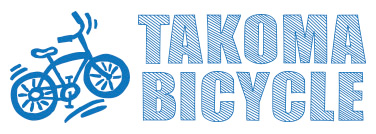
Are you ready for your first spring ride?
Spring has finally sprung, and you're ready to pull your bike out of the garage for the first time. You have a long ride all planned and scheduled for the next day. You're fueled up, hydrated, and all your essential gear and riding apparel is laid out and ready to go. But what about your bike?
It's always a good idea to give your two-wheeled machine a quick once-over before a major race or long ride. It will increase the likelihood that you catch small problems that could lead to a mechanical breakdown or accident during your big event.
A routine tune-up typically takes about an hour (if you know what you're doing). As long as you have the right tools, it's a manageable task for even home mechanics. Besides addressing potential problems, it will boost your confidence that you can handle anything that might happen out on the road. Of course, if you don't have the time or energy to do it yourself, just bring your bike on in for a tune-up!
(Keep in mind that the procedure outlined here is only applicable to a reasonably maintained bike that's in good working condition. If your rig has been collecting dust in the back of your garage for several years, let our professional mechanics give it a thorough tune-up.)
Step 1: The Quick Wipe-Down
Place your bike in a repair stand. If the bike is only slightly dirty, just give it a good wipe down with a rag. If it is truly dirty, remove both wheels and wash thoroughly. If the drivetrain is really grimy, spray the bike chain and derailleurs with degreaser and let the bike sit for a few minutes. Fill the bucket with warm, soapy water. Wet a sponge, hold it on the chain, and turn the crank to draw the chain through the sponge until the links are clean. Clean the crankset and derailleurs as well. Then clean the frame and parts (including the wheels) with a fresh sponge. Rinse by dripping water from above. (Don't spray directly at the bike because this can force water into the bearings.) Dry the bike and all parts with rags.
Make sure there is no play in your headset by properly tightening the stem cap.
Step 2: Headset and Bottom Bracket Check
Stand in front of the bike, holding the fork in one hand and the down tube in the other. Push and pull on the fork to check for play in the headset. Rotate the fork slowly from side to side to feel for roughness. If it's loose or tight, loosen the stem binder bolts, then remove play or tightness by adjusting the Allen screw atop the stem, and finish by securing the stem bolts. Now check the bottom bracket bearings. Stand beside the frame, hold the crank arms, and push and pull, feeling for play. Most bottom brackets are sealed and reliable. If yours is loose, have a shop remove the crank arms and adjust it.
If you spot a piece of debris lodged in your tire, try carefully picking it out.
Step 3: Tire Check
Inspect your bike tires for cracks, cuts, blisters, and baldness. Replace tires, as needed. Also, check tire seating. There are lines on the base of the sidewalls that should sit just above the rim all the way around. If they dip below the rim edge or rise above it, the tire is not seated properly. If you find any of these problems, deflate the tire and re-inflate it, making sure that it seats correctly. Reinstall the wheels on the bike, making sure that they are centered in the frame and the quick-releases are properly tightened.
Tighten loose spokes by turning the nipple clockwise.
Step 4: Wheels & Spokes
Starting at the valve stem, work your way around each wheel, wiggling the spokes to see if any are loose. After checking a few spokes, you'll get a feel for the correct tension. If you find loose spokes, tighten them by turning the nipple clockwise with a spoke wrench (when sighted from above) in half-turn increments. Then spin the wheels and sight trueness by looking at the gap between the rim and brake pad. If you see a wobble, you'll need to true the wheel.
This is a more complex process and is best left to a bike shop mechanic unless you are an experienced home mechanic. As a primer on wheel truing, to move the rim to the left, loosen right-side nipples and tighten left-side nipples in the problem area. Do the reverse to move it right. Always turn nipples a half-turn at a time and check progress. Patience is key here.
It's a good idea to check and snug chainring bolts from time to time.
Step 5: Check Your Drivetrain & Repair Tools
Though major components should not come loose during normal use, it is still wise to check them periodically. Without forcing, tighten crank bolts, pedals, chainring bolts, stem binder, handlebar binder, seat binder, seat bolt, brake and derailleur attaching nuts/bolts, and bottle cage screws. (Everything is turned clockwise to tighten except the left pedal, which is turned counterclockwise.)
Also, make sure all your repair gear is in proper working order, including pump or CO2 inflator. Finally, put a drop of lube on the pivot points of clipless pedals, derailleurs, and brakes.
Keeping your chain properly lubricated is critical to a properly functioning (not to mention quiet) bike.
Step 6: Your Cabling & Bike Chain
If they are not internally routed, lube your bike's shifter cables where they pass under the bottom bracket. Lube the chain, then shift through the gears repeatedly to test derailleur adjustments. Because the rear derailleur's cable is longer and gets more use, it's more likely to go out of adjustment. Each click of the rear shift lever should cause the bike chain to immediately jump to the next cog. If not, the cable has probably stretched slightly, or you may have mistakenly adjusted it too tightly. If the chain hesitates to go to a larger cog, the cable is slightly loose. If the chain is slow in moving to a smaller cog, the cable is too tight. Fix slow shifts to larger cogs by turning the adjustment barrel on the rear of the derailleur counterclockwise in half-turn increments. For slow shifts to smaller cogs, do the opposite.
For electronic shifting systems, do the same test, running through both front and rear shifting to make sure everything is operating properly. If you do discover any problems, consult the appropriate troubleshooting manual for your components (Shimano, SRAM, or Campagnolo) to help diagnose and remedy the problem. Adjusting electronic systems is typically much easier than traditional mechanical shifting drivertrains. In fact, as long as your battery is adequately charged, it's unlikely you'll have to do much adjusting at all. Just make sure you're fully charged before the big ride. Without a charged battery, your electronic system will not work. There's nothing worse than being stuck in one gear all day.
A small turn of your brake's barrel adjuster will move your pads in or out.
Step 7: Brake Pads
Inspect all four of your bike's brake pads. If the grooves are worn away, it is time to replace the pads. Make sure that they strike the rim squarely. If not, use an Allen wrench to loosen the nut that secures the pad and reposition it. Squeeze the brake levers to feel the action. The pads should strike the rim well before the levers approach the handlebar. If not, tighten the brake by turning the barrels on the brake calipers. If it's one piece, turn it counterclockwise until the pads are 1/8 to 1/4 inch away from the rim.
If your bike is equipped with disc brakes, you'll need to remove the wheels to inspect the pads. Once the wheels are off, assure that your pads have at least 1.5mm of braking material left. Anything less and it's time for a new set of brake pads. Also make sure that your braking system is working properly by squeezing the levers several times while the wheel and rotor are in place. If the lever action feels mushy or the lever pulls all the way to the bars before engaging, it's likely time for a brake bleed. This is another advanced-level maintenance task, so if you're not an experienced mechanic, take your bike to the shop and get the brakes checked and bled if necessary.
Time permitting, take a short test spin before heading out for your all day affair.
Step 8: Test Before You Ride
Once you've run through all these steps, take your bike for a short test ride. Shift and brake repeatedly, making adjustments as necessary. Now you are ready for your big ride, confident that as long as your body cooperates there is nothing to prevent you from successfully getting to the finish line.
Article originally posted on bicycling.com


